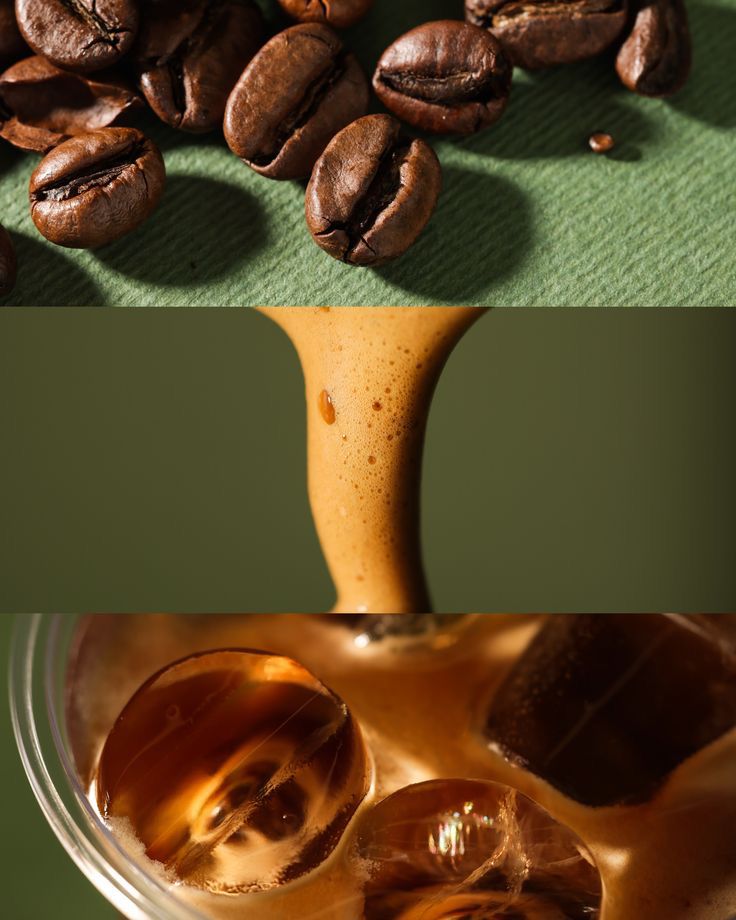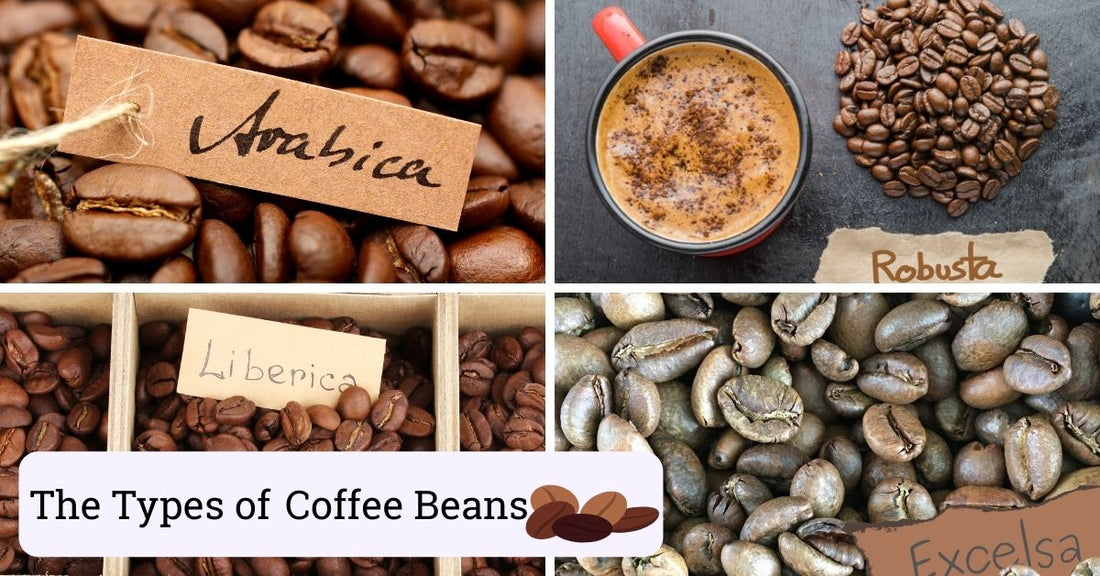I. Introduction
Coffee is one of the world's oldest and most beloved drinks. From light and airy espresso to robust and flavorful dark-roasted blends, it can be hard to decide which type of bean you should choose. But with so many different types of coffee beans, each with its unique flavor profile, it isn't difficult to find something to suit your taste buds. In this article, we will take a look at some of the most popular types of coffee beans and their distinct flavor profiles.
A. Brief overview of coffee beans and the importance of their flavor profiles
Coffee beans, originating from the seeds of a cherry-like fruit, play an integral part in the flavor of every cup of coffee. Different species have different flavor profiles that can range from light and airy to robust and smoky. The importance of understanding these flavor profiles is essential for any barista or home brewer who wants to create the perfect cup. Here's a brief overview of some of the most popular types of coffee beans and their unique flavor profiles.
B. Two main types of coffee beans: Arabica and Robusta
When it comes to different types of coffee beans, the two most common are Arabica and Robusta. Arabica is known for having a sweeter, more floral aroma and a milder flavor with hints of cocoa and nuts. On the other hand, Robusta has a bolder, slightly bitter flavor and an earthy aroma. Both types of beans can be roasted light or dark depending on the desired flavor profile.
II. Arabica Coffee Beans
A. Description of Arabica coffee beans
Arabica coffee beans are one of the most popular types of beans and are revered for their complex flavor profiles. They have a light, sweet aroma with hints of fruit and nuts, and a mild, smooth taste that is often described as having notes of cocoa or caramel. When roasted well, Arabica beans create a well-balanced cup of coffee with delicate floral undertones.
B. Flavor profile: mild, sweet, and fruity with notes of chocolate, caramel, and nuts
Arabica coffee beans are generally mild, sweet, and fruity with notes of chocolate, caramel, and nuts. They have a pleasant aroma that often hints at floral and nutty flavors. When roasted, Arabica beans create a well-balanced cup of coffee with delicate undertones. The flavor is described as having notes of cocoa or caramel and bright, lingering fruity notes on the finish.
C. Arabica beans are more expensive and produce a higher quality cup of coffee
Arabica coffee beans are generally more expensive than other types of beans, but they produce a higher quality cup of coffee. The complexity and overall flavor make it a popular choice among coffee drinkers as they have a light, sweet aroma with hints of fruit and nuts and a mild, smooth taste that is often described as having notes of cocoa or caramel. Arabica beans create the perfect balance for an enjoyable cup of coffee.
D. Various regions where Arabica beans are grown and how the growing conditions affect their flavor
Arabica coffee beans are grown in various regions around the world, from Latin America to Asia and Africa. As the climate and growing conditions vary between countries, the flavor of Arabica beans can be slightly different depending on their origin. Generally speaking, coffees from high altitudes have a brighter acidity and fruity notes, while lower altitude coffees have more of a chocolatey or nutty character. In addition, weather conditions during harvest can also affect the flavor of Arabica beans; for example, dry years may lead to increased sweetness, while wetter years may result in more acidic notes. By considering these factors, it's possible to create some truly unique cups of coffee with Arabica beans that have distinct flavor profiles.
III. Robusta Coffee Beans
A. Description of Robusta coffee beans
Robusta coffee beans are known to be more robust than Arabica beans and have higher caffeine content. They typically have an earthy and bitter flavor, which can be quite intense. This type of bean is usually used in espresso blends due to its high crema-producing capabilities. Compared to Arabica beans, Robusta coffee can sometimes lack sweetness and body, but they make up for it with its strong aroma and bold flavor.
B. Flavor profile: strong, bitter, and earthy with notes of dark chocolate and burnt rubber
Robusta coffee beans are usually strong, bitter, and earthy in flavor, with notes of dark chocolate and burnt rubber. They tend to have a higher caffeine content than Arabica beans and are used mainly in espresso blends due to their crema-producing capabilities. The intense bitterness of Robusta coffee can be quite powerful, but it also provides an underlying sweetness that can only be found in this type of bean. The aroma of this type of coffee is often described as earthy and has a smoky undertone. Combined with the other flavor components, the overall flavor profile of Robusta coffee can make for a full-bodied cup that will satisfy any coffee lover.
C. Robusta beans are less expensive and used primarily for instant coffee and espresso blends
Robusta coffee beans are usually less expensive than Arabica beans and are primarily used for instant coffee and espresso blends. They have a higher caffeine content, which makes them ideal for espresso preparations. The flavor profile of this type of bean is often described as strong, bitter, and earthy, with notes of dark chocolate and burnt rubber. The intense bitterness of Robusta coffee can be quite powerful but also provides an underlying sweetness that can only be found in this type of bean. While they might lack in sweetness and body compared to their Arabica counterparts, they make up for it with their strong aroma and bold flavor.
D. Various regions where Robusta beans are grown and how the growing conditions affect their flavor
Robusta coffee beans are mainly grown in regions with warmer climates, such as Africa and Southeast Asia. The soil type, temperature, and rainfall all play an important role in the flavor of the final product. Regions with warmer temperatures tend to produce beans with more bitterness, while areas that have lower temperatures produce beans that are more mellow in flavor. The different levels of rainfall also affect the flavors, with dryer climates producing beans with more acidity and sweetness. When it comes to growing conditions, Robusta coffee has unique requirements that Arabica does not, making it a challenge for farmers to adjust. By understanding the various regions where Robusta beans are grown and how the growing conditions can affect their flavor profile, coffee enthusiasts can appreciate this type of bean even better.
IV. Other Types of Coffee Beans
A. There are other less common types of coffee beans, such as Liberica and Excelsa
While Arabica and Robusta are the two main types of coffee beans, there are some lesser-known varieties. Liberica and Excelsa beans are two such examples, with each having a distinct flavor profile. Liberica is known for its robust flavor and notes of dark cherry, chocolate, smoky wood, and cardamom. Excelsa has a fruity taste that is reminiscent of blueberries or tart cherries, along with hints of honey and nuts. Although these beans aren’t as popular as Arabica or Robusta, they can be found in specialty stores and are worth exploring if you're looking for something new to try.
B. Flavor profiles
Arabica beans are known for their smooth, delicate flavor and sweet notes. Robusta beans have a bolder, more intense flavor with hints of chocolate and nuttiness. Liberica has a robust taste with notes of dark cherry, chocolate, smoky wood, and cardamom. Excelsa is fruity with flavors reminiscent of blueberries or tart cherries and hints of honey and nuts. Coffee from any of these types of beans can be brewed to a wide range of strengths, allowing you to customize the flavor depending on your preferences.
V. Factors Affecting Coffee Flavor
A. The flavor of coffee is influenced by factors such as roast level, grind size, brewing method, and water quality
The taste of coffee can vary greatly depending on several factors, such as the type of bean used, the roast level, grind size, brewing method, and water quality. Each factor contributes to the overall flavor and strength of the coffee. For example, a darker roast will have a stronger taste than a lighter roast. Likewise, a finer grind size will result in a stronger brew than if you use coarse grinds. Additionally, different brewing methods will also affect the flavor of your coffee - espresso and French press both yield completely different results despite being made with the same beans. Finally, the quality of the water you use will also impact the final product; always be sure to use filtered or spring water for the best results.
B. How each of these factors affects the flavor of coffee
The type of bean used is one of the most important factors in determining the flavor of your coffee. Arabica beans tend to be smooth and delicate with sweet notes, while Robusta beans are bolder and more intense with hints of chocolate and nuttiness. Liberica beans have a robust taste with notes of dark cherry, chocolate, smoky wood, and cardamom. Lastly, Excelsa beans are fruity with flavors reminiscent of blueberries or tart cherries and hints of honey and nuts.
The roast level also affects the flavor profile; darker roasts offer bolder flavors that are typically stronger than light or medium roasts. The grind size is another element to consider when brewing - a finer grind yields a stronger cup than a course grind. Different brewing methods can also influence the flavor output - for example, espresso will produce a stronger, more concentrated brew than other methods like a French press or pour-over coffee. Finally, water quality also impacts the flavor; always use filtered or spring water for the best results.
VI. Conclusion
A. Main points about the types of coffee beans and their flavor profiles
There are four main types of coffee beans; Arabica, Robusta, Liberica, and Excelsa. Each type has its unique flavor profile - Arabica beans have a smooth and delicate taste with sweet notes, Robusta beans are bolder and more intense with hints of chocolate and nuttiness, Liberica beans have a robust taste with notes of dark cherry, chocolate, smoky wood, and cardamom, while Excelsa beans are fruity with flavors reminiscent of blueberries or tart cherries and hints of honey and nuts. The roast level, grind size, brewing method, and water quality also all impact the flavor of the coffee.
B. Understanding the flavor profiles of different types of coffee beans can help coffee lovers choose the best beans for their preferred brewing method and taste preferences.
Understanding the flavor profiles of different types of coffee beans can help coffee lovers find the perfect beans for their preferred brewing method and taste preferences. Arabica beans tend to be smooth and delicate with sweet notes, while Robusta beans are bolder and more intense with hints of chocolate and nuttiness. Liberica beans have a robust taste with notes of dark cherry, chocolate, smoky wood, and cardamom. Lastly, Excelsa beans are fruity with flavors reminiscent of blueberries or tart cherries. Roast level, grind size, brewing method, and water quality also have an impact on the flavor of the coffee - understanding these elements will help you find the right cup for you.
VII. Additional Resources
A. Recommended coffee brand
For those looking for the best coffee brands and brewing methods to make the most of their daily cup of Joe, visit our shop for a great coffee experience. We also have coffee machines, grinders and brewing tools.
B. Online communities and forums for coffee lovers
For those looking for an online community to share their coffee experiences and knowledge with others, these are some of the best options.


